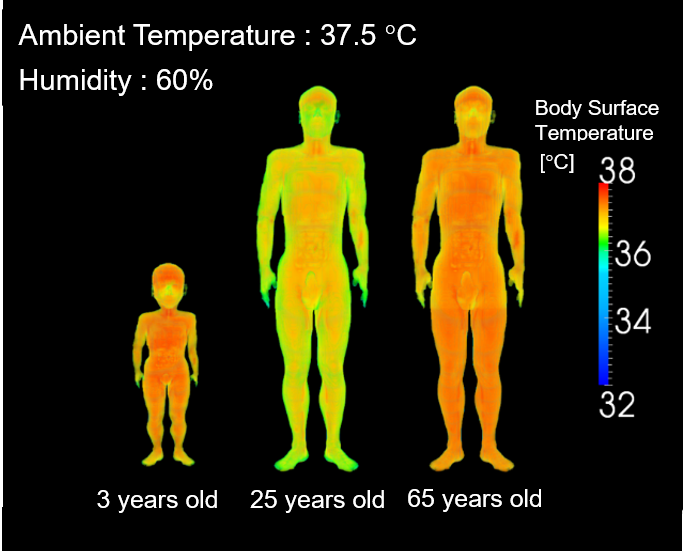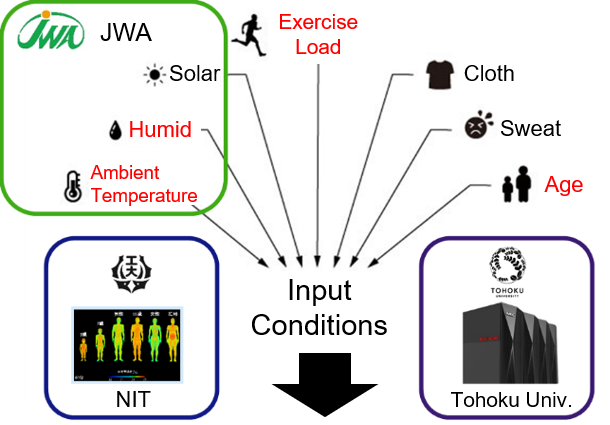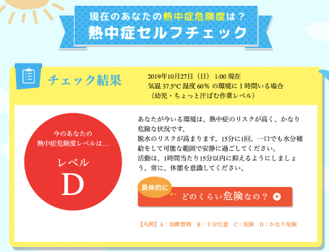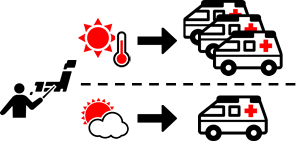Predicting heat-stroke risk and achieving a heatstroke-free society
In order to prevent heat stroke, which has become a social problem in recent years, raising awareness of the risk of heat stroke is an important issue. In our laboratory, we are tackling this issue from an engineering point of view, from both “risk assessment” and “risk management”.
Risk assessment for heat stroke
We apply an original approach that combines electromagnetic field analysis technology and thermal analysis technology in order to evaluate the risk of heatstroke from physical phenomena caused by electromagnetic fields (sunlight) and heat. This approach also takes into account factors such as a person’s thermoregulatory function, clothing, and activities that change with age.

One of the features of our approach is that it allows you to visualize the simulated changes in human body temperature. For example, look at a 3-year-old, a 25-year-old, and a 65-year-old person resting for 90 minutes in a room with a temperature of 37.5 degrees Celsius and 60% humidity. It is possible to see the temperature distribution of the whole body, and it is obvious that infants and the elderly are at a higher risk of heat stroke because their body temperatures tend to rise.

Using this program as the basic technology, we have been conducting a joint project with the Japan Weather Association and Tohoku University. Combining the meteorological data of the Japan Weather Association and Tohoku University’s supercomputer, we have developed web contents[simple_tooltip content=’Click here!!’]「Self assessment test for Heat Stroke (IN JAPANESE)」[/simple_tooltip]. GPS and other communication technologies are also used.


Managing the risk of heat stroke
We are applying adopting different technologies to “self-medication” to manage one’s own risk of heat stroke and “collective risk management” to manage the risk of heat stroke for many people at once. These technologies comprise Internet of Things (IoT) and AI technology,

Self-medication uses wearable devices such as smartwatches to acquire data such as heart rate and blood pressure, and estimates the rise in body temperature and perspiration on a smart phone. At events, workplaces, and other places where many people gather, if the body data of each person is acquired and analyzed on the cloud, it is possible to understand the tendency of body temperature changes and perspiration as a group, and use this information can be used and evaluated to set appropriate air conditioning temperatures and rest periods.

Rise awareness of heat stroke risk
We are also developing a technology to predict the number of people who will be transported for heat stroke based on weather forecasts. This is achieved through a statistical process called machine learning, using data accumulated through analysis and data from people who have actually been transported in the past.

As of October 2019, the accuracy of predicting the number of cases is 70-80%.

At present, we are continuing to develop the system to achieve even higher prediction accuracy. In the future, we hope that the system will be used to raise awareness of the risks among citizens and planning and optimize medical resources.
